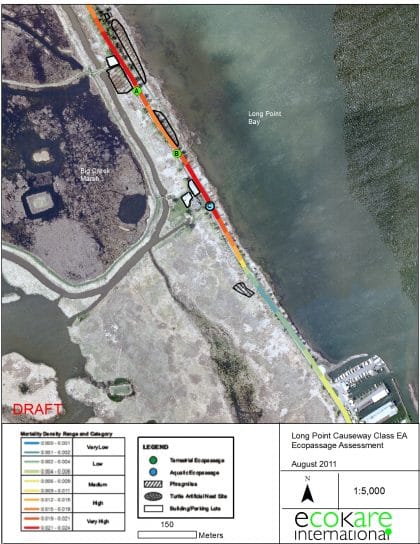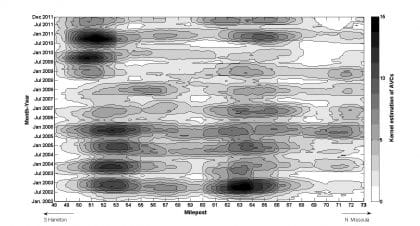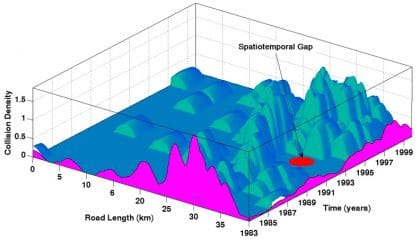Planning (Site Specific)
Site-specific planning for mitigation measures often occurs on one road or on a segment of a road. Mitigation measures can be implemented on an existing road (e.g. Long Point Causeway in Norfolk County) or on a new road upgrade project such as a new alignment (e.g. Highway 69 near Estaire Ontario) or a new road extension (e.g. Terry Fox Extension, City of Ottawa). Eco-Kare assists transportation planners in deciding how many, what, and where mitigation such as crossing structures are needed. As part of the strategy Eco-Kare will perform site plans based on best available road-kill data and other natural heritage features.
Examples of site-specific planning projects are below:
Eco-Kare has worked with the Long Point Causeway Improvement Project to prioritize where three wildlife crossing structures were to be placed in 2011. Eco-Kare also informed the design specifications required for the crossing structures. Since then a total of 12 tunnels for drainage and wildlife, primarily turtles have been integrated into the road.

Eco-Kare developed kernel density space-time output for deer-vehicle collisions from January 1998 to December 2011 from mile posts 49.1 to 74.3 on US Highway 93S for the Montana Department of Transportation (bottom left). The application was developed from MSc. work by K. Gunson that looked at hotspots for moose-vehicle collisions in Vermont (bottom right) and can be used to plan where mitigation is needed or evaluate effectiveness.
Cramer, P., R. Hamlin, K. Gunson, and M. Greenwood. 2013. US Highway 93 South wildlife crossings research. Annual report submitted to the Montana Department of Transportation, Helena, Montana.
Mountrakis, G., and K.E. Gunson. 2009. Multi-scale spatio-temporal analyses of moose–vehicle collisions: a case study in northern Vermont. International Journal of Geographical Information Science 23:1389–1412.


Eco-Kare has worked with the Ontario Ministry of Transportation (MTO) to prioritize where turtles are being killed on 100 km of highway in Eastern Ontario. One hotspot was selected for mitigation because it was reoccurring over 5 years of monitoring and all three species of aquatic turtles (Painted Turtle, Snapping Turtle, Blanding’s Turtle) known to live in the area were killed at this location each year.
Click here to see subsequent site specific mitigation details
